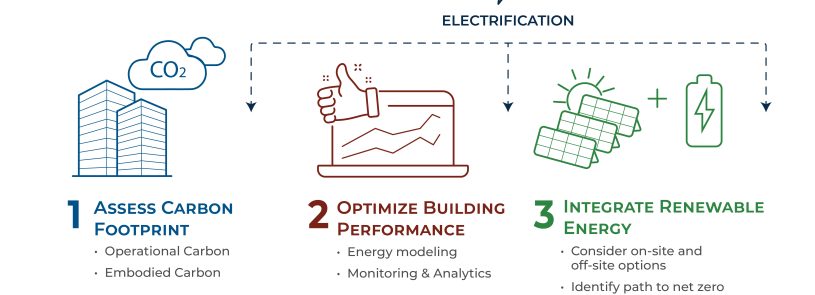3 steps to healthcare decarbonization provides a pragmatic approach for organizations (Podcast included)

By Eric Vandenbroucke
The U.S. healthcare industry is responsible for 2.4 percent of the world’s total carbon emissions and nearly 50 percent of global healthcare emissions, according to Environmental Research Letters.
The reason is not a surprise. U.S. healthcare facilities such as hospitals and clinics—with their 24/7 operation, large consumption of supplies, exacting climate control and electricity needs, and 6.6 million hospital personnel driving to and from work every day—creates a large operational energy burden.
In response, a growing number of healthcare organizations are beginning to address decarbonization of their buildings and campuses—a daunting prospect for many. To provide guidance on how to begin the process, IMEG has released a new executive guide, “Decarbonization in Healthcare.” The guide offers thoughtful, measured, and practical approaches to reduce and eventually eliminate carbon emissions, as well as steps toward campus-wide building electrification—the ultimate destination of the decarbonization journey.
This journey consists of three main parts:
- Establish your strategy and goals and assess where carbon exists in your current portfolio.
- Optimize the performance of existing buildings.
- Offset the remaining carbon with zero-carbon-generation sources.
The benefit of reducing carbon emissions is not just saving the planet. The Commonwealth Fund estimates that reducing energy use and adopting other environmentally sustainable policies can save the healthcare industry up to $15 billion over 10 years.
It also reinforces healthcare’s age-old mission to heal—and the oath physicians take to “do no harm.” The healthcare industry is the perfect standard bearer in the quest to heal the earth and can model a sustainable and responsible business practice for other industries to follow.
Learn more by downloading IMEG’s guide or by listening to the podcast.












